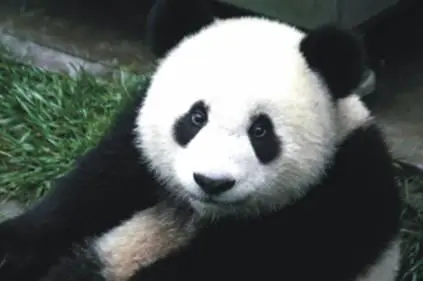Simon Foster - CHINA's Three Gorges & Xi'an
Здесь есть возможность читать онлайн «Simon Foster - CHINA's Three Gorges & Xi'an» весь текст электронной книги совершенно бесплатно (целиком полную версию без сокращений). В некоторых случаях можно слушать аудио, скачать через торрент в формате fb2 и присутствует краткое содержание. Год выпуска: 2010, Издательство: Hunter, Жанр: Старинная литература, на английском языке. Описание произведения, (предисловие) а так же отзывы посетителей доступны на портале библиотеки ЛибКат.
- Название:CHINA's Three Gorges & Xi'an
- Автор:
- Издательство:Hunter
- Жанр:
- Год:2010
- ISBN:нет данных
- Рейтинг книги:4 / 5. Голосов: 1
-
Избранное:Добавить в избранное
- Отзывы:
-
Ваша оценка:
- 80
- 1
- 2
- 3
- 4
- 5
CHINA's Three Gorges & Xi'an: краткое содержание, описание и аннотация
Предлагаем к чтению аннотацию, описание, краткое содержание или предисловие (зависит от того, что написал сам автор книги «CHINA's Three Gorges & Xi'an»). Если вы не нашли необходимую информацию о книге — напишите в комментариях, мы постараемся отыскать её.
CHINA's Three Gorges & Xi'an — читать онлайн бесплатно полную книгу (весь текст) целиком
Ниже представлен текст книги, разбитый по страницам. Система сохранения места последней прочитанной страницы, позволяет с удобством читать онлайн бесплатно книгу «CHINA's Three Gorges & Xi'an», без необходимости каждый раз заново искать на чём Вы остановились. Поставьте закладку, и сможете в любой момент перейти на страницу, на которой закончили чтение.
Интервал:
Закладка:

Increasing panda numbers involves preventing poaching and protecting panda habitats, but also ensuring that newborns manage to survive. Female pandas only reproduce once every two years and high infant mortality rates both in the wild and in captivity have hindered population growth. Although roughly half of all panda pregnancies result in twins, it's rare for two to survive, since the mothers reject the weaker sibling to nurture and protect the stronger. In captivity, one twin is taken away from its mother and sibling and re-introduced to the family at a later date, although this had been unsuccessful until new techniques including "twin swapping” and an accurate simulation of panda milk were introduced. Recent breakthroughs like these have led to a record number of births and an increased survival rate. Sixteen cubs were born in 2005, including a wonderful five sets of twins; all of them are still alive and well today. Success has also been enjoyed in the US, where baby Tai Shan was born in 2005 after his mom, Mei Xiang, was artificially inseminated. If captive numbers can reach 300 individuals, then this population should be able to maintain itself and its genetic diversity, though this is no viable substitute for wild populations.
Visiting the Pandas
Unless you have a number of months to go trekking into the wild, your best option is to visit one of the WWF-sponsored breeding and research centers at Chengdu and Wolong in Szechuan or at the Zhouzhi centerin Shaanxi (see Sightseeing, Around Xi'an ). Here, you can see pandas in their natural habitat and, although they are still confined, the enclosures are large and the animals are well cared for. If you're not visiting these areas there are pandas in the zoos, but this is an experience far removed from a wild sighting, and conditions leave a lot to be desired.
Animal Protection Organizations
Animals get a rough deal in many parts of Asia and China is no exception, particularly because of the predilection for exotic animal parts as remedies used in TCM. The websites listed below offer information and ways to help animals in China:
Animals Asia(www.animalsasia.org). This Hong Kong-based charity established in 1998 runs a variety of animal welfare programs in China. China Bear Rescue has helped over 200 bears in China escape a torturous life of captivity. There is still a huge medicinal market for bear bile and many undergo the horrific technique of bile extraction known as 'free dripping.'
WWF(www.wwf.china.org). Although they are most readily associated with pandas in China, the WWF is involved in wide-ranging projects throughout the country that aim to protect various animals through a variety of means, including preserving their habitats, rehabilitation and education.
Population
In 2 AD China's population was estimated at nearly 58 million by the world's first large-scale census. In spite of famine, plague, epic natural disasters and mass exodus, the population has grown steadily since then and today stands at over 1.3 billion people, making it the world's most populous nation. In spite of a quarter-century of the one-child policy, it looks as if it will maintain pole position until at least the middle of the century, when India may take the lead.
The One-Child Policy
Overpopulation led to the radical step of the one-child policy in 1979. It stated that couples had to obtain permission before trying to have a child and if they failed to do this then the pregnancy would be terminated. Minority families living in the countryside were (and are) allowed two children, but in the cities if families had more than one child they had to pay punitive taxes. Although the policy has been effective in limiting population growth, it is China's tremendous number of people that has allowed its meteoric development. Along with the associated problems of gender imbalance and Little Emperors (see below), the aging population has led to fears that China will lose the competitive edge afforded by its vast numbers. As people enjoy more wealth and social freedom, they also want to choose how many children they can have, with two being the popularly cited number among the urban elite. In response to these factors, regulations have been relaxed a little and couples whose first child is a girl and who meet other requirements such as waiting for four years after their first-born, can now have a second child. There are suggestions that the policy may be scrapped altogether in the near future, but the official party line says nothing of the kind.
Gender Imbalance
Boys were always favored over girls as in marriages the bride's family had to pay a dowry and the new couple would live with and help to support the groom's family. Limiting the number of children to one per family made having a boy crucial to the family line and led to thousands of female abortionsand infanticides. Although ascertaining a child's sex by ultrasound is theoretically illegal, in practice this procedure is available in China for less than US$100 and is commonplace. Thus many couples wait to see the child's sex and then only proceed with the pregnancy if it's a boy. The result of this isn't yet fully recognized, but even the government admits that there are 119 boys born for every 100 girls and already China has some 60 million more men of reproductive age than women.
Little Emperors
In the countryside the policy means that there are fewer people to work the fields, a problem exacerbated by rural to urban migration. In the cities some families are now enjoying prosperity unimaginable in their parents' time but have to focus all the love that used to be spread among many children onto their single (or, if they're lucky, two) offspring. This is evident in the legion of overfed, spoiled young "emperors” being carted around expensive shopping centers.
People
The Han
The Han was one of China's earliest and greatest dynasties and lends its name to the ethnic group which makes up 93%of the population today. One of the words for the Chinese language, hanyu literally means Han language. The Han are the people of the Middle Kingdom and for the longest time considered most of the other minority groups as insignificant but savage barbarians. Central China is the Han heartland, but in politically sensitive areas like Tibet, there are incentives to attract Han people to settle there and help maintain the region's "loyalty.” Through the course of history encroachments by outside influences were subsumed into the all powerful Han culture.
The Minorities
In addition to the Han, the Chinese population also includes some 55 ethnic groups, which are as diverse as you'd expect for a land as vast as China. The southwest is where you'll find the greatest number of minorities, many of whom are more akin to the hilltribes of Southeast Asia than Han China. Guangxi, Guizhou and Yunnan are home to a number of China's most colorful ethnic groups including the Bai, the indigo-clad Dong, the Miao, the Naxi, the Yaoand the Zhuang, all of whom have their own distinct culture, customs and architecture. In the north and northwest there are wilder groups, such as the nomadic Mongoland Tibetanherders, as well as Central Asian horsemen like the Kazakhand the Tajik. While central and eastern China are predominantly Han, other groups such as the Hakkaretain importance in the region and examples of their traditional architecture are still to be found in the southeast and Hong Kong's New Territories.
Читать дальшеИнтервал:
Закладка:
Похожие книги на «CHINA's Three Gorges & Xi'an»
Представляем Вашему вниманию похожие книги на «CHINA's Three Gorges & Xi'an» списком для выбора. Мы отобрали схожую по названию и смыслу литературу в надежде предоставить читателям больше вариантов отыскать новые, интересные, ещё непрочитанные произведения.
Обсуждение, отзывы о книге «CHINA's Three Gorges & Xi'an» и просто собственные мнения читателей. Оставьте ваши комментарии, напишите, что Вы думаете о произведении, его смысле или главных героях. Укажите что конкретно понравилось, а что нет, и почему Вы так считаете.












